Curly hydrangea is able to decorate any garden and become the main bright accent on the plot.
Material Content:
Grade description
Petioles curly hydrangea or Hydrangea petiolaris does not have a solid trunk, and is rather not a shrub, but a vine. This ornamental plant climbs on a support up to 20 meters high.
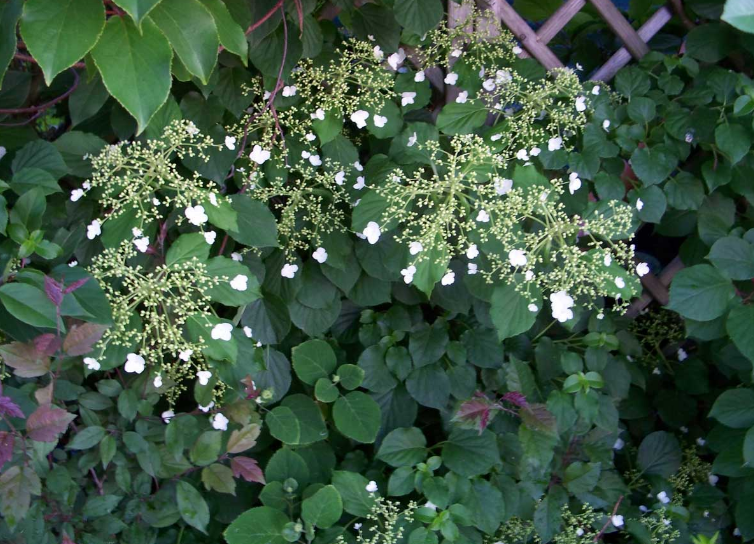
This type of hydrangea is found in nature mainly in Asia. Translated from Japanese, hydrangea means "purple sunny flower." The plant quickly covers the surrounding area, and is widely used for landscaping.
Curly hydrangea is listed in the Red Book. Her flowers are collected in large inflorescences. Flowering occurs in June and lasts all summer. Interestingly, with age, the number of flowers on the vine only increases. White flowers gradually turn pink.
Outdoor landing
The best time is spring. For hydrangea, a plot that is protected from wind and direct sunlight is suitable. In complete shade, the plant will be very ill, and the liana will simply not bloom.
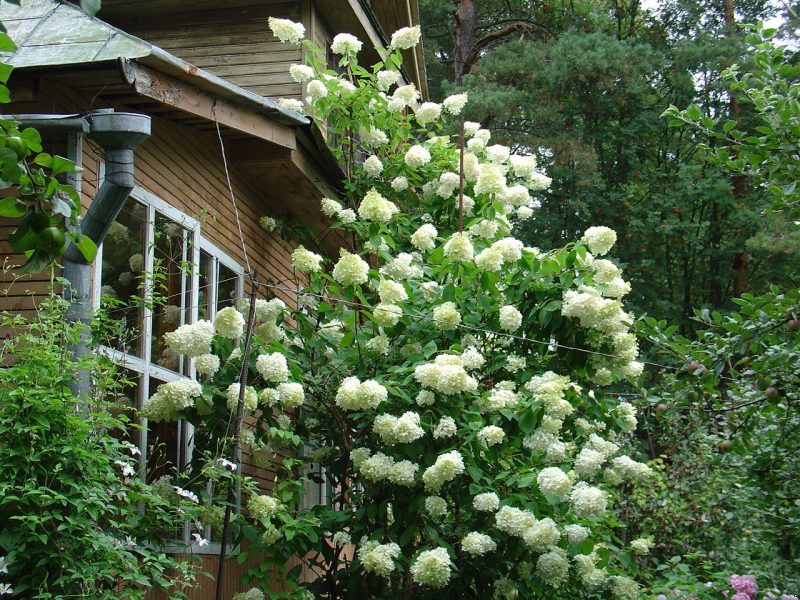
The flower prefers the soil loose, slightly acidic, deeply moistened. The optimal composition is a mixture of peat, garden soil and sand. All mixed in equal proportions and filled with soil mixture pit for planting.
It is very important that the planting pit for a plant is twice as large as its root system. When planting, the roots of the flower are carefully straightened, and the root neck is deepened by 2 cm. If this is not done, the vine will grow very poorly.
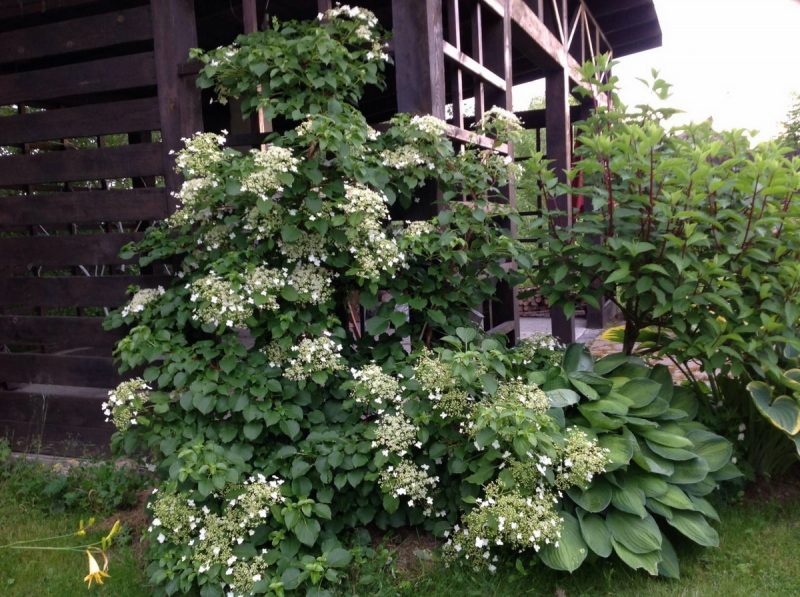
After planting, the earth is well tamped so that in no case there are voids, since then the roots will lack moisture.Planting curly hydrangea necessarily ends with a very plentiful watering - it is advisable to wet the soil by 50 cm.
Read also:large-leaved hydrangea
Care for petiole hydrangea
Despite all its exoticism, hydrangea does not need painstaking care and great attention.
Watering and feeding
Hydrangeas are very moisture-loving, and therefore they should be watered regularly and very plentifully. Drying of the soil must not be allowed, otherwise the vine will lose its decorative effect. At least 20 liters of water should be poured onto one vine. It is advisable to defend tap water or irrigate hydrangea with rainwater. Hydrangea is useful in acidifying water with lemon juice or table vinegar.
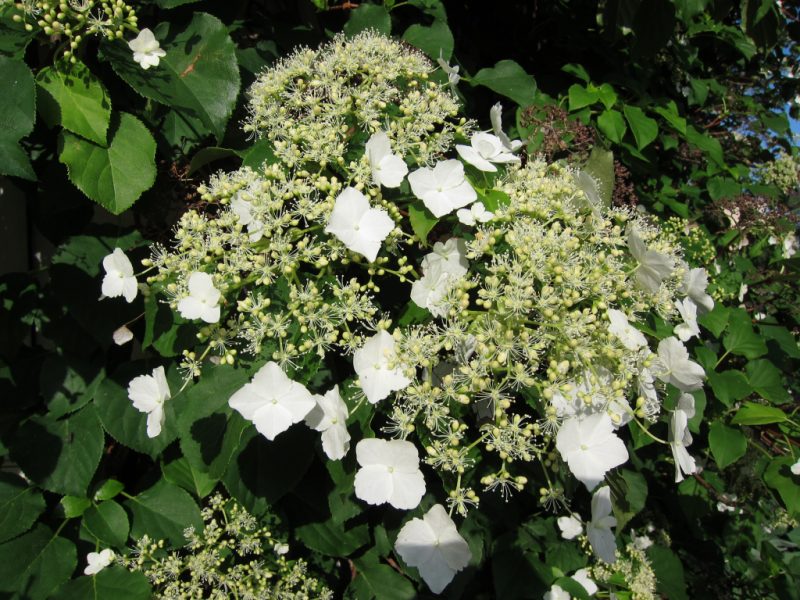
The plant is watered every 14 days. In drought, watering is increasing. In the rain, the vines are not watered. In hot periods, the vine should be sprayed. If possible, a nebulizer is installed next to the hydrangea.
For lush flowering, hydrangea must be fed. Compounds should include iron and magnesium. Specialty hydrangea formulations are sold in stores.
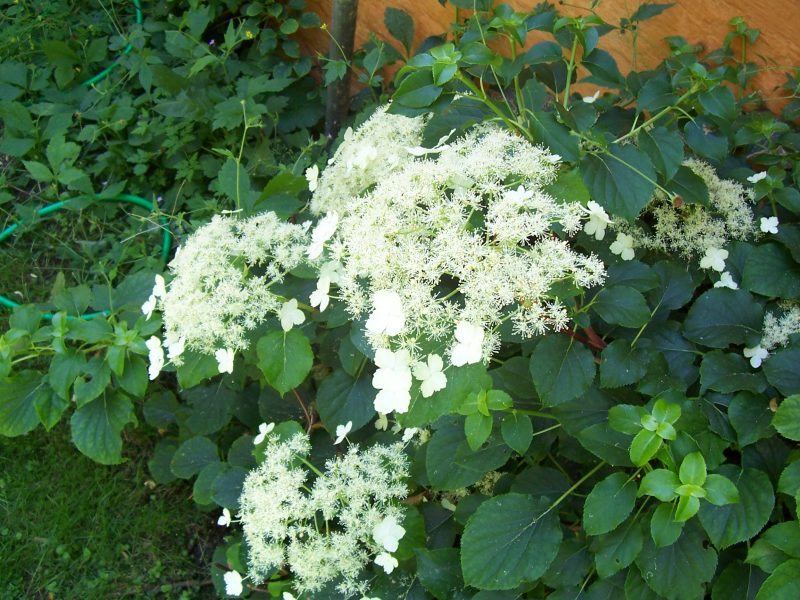
When planting, you need to do the first feeding of the vine. Then fertilizers are applied only during the period of active vegetation. The first feeding in the season is carried out at the very end of spring - a diluted bird droppings are introduced. Then after 2 weeks they are fed with superphosphate and urea. Then fertilizers are applied every 2 weeks - organic and mineral mixtures should alternate.
It is interesting:hydrangea annabelle
Pruning
Hydrangea care must necessarily include regular pruning. Climbing hydrangeas need decorative pruning. Spend it in the early spring. In the fall, just before the frosts, sanitary pruning is carried out.

To create a beautiful form of lianas and give the desired direction to the growth of shoots, they are shortened. All old branches are deleted at the same time. In autumn, dried inflorescences and damaged branches are removed.
It is interesting:hedge
How to care for hydrangea in autumn, winter
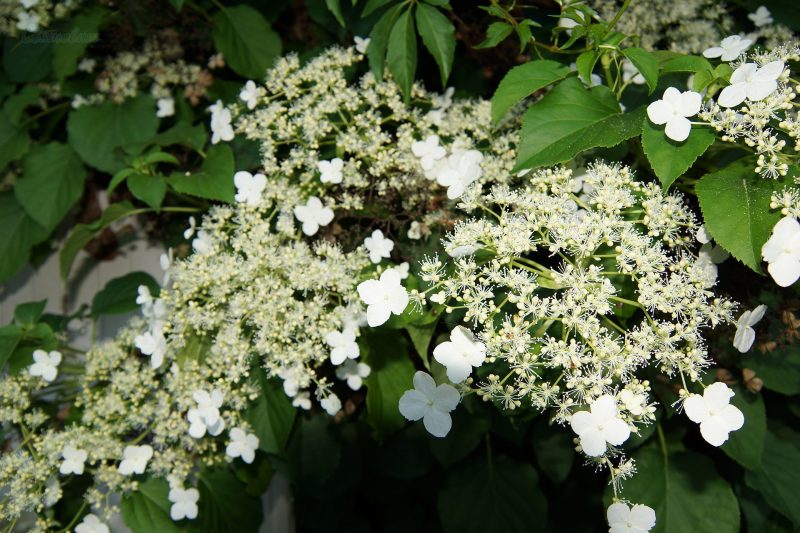
This plant is able to withstand even frost -30. But in the first couple of years of life, young creepers shelter in the fall for the winter. To do this, the shoots are tied, laid on the ground and covered with a spruce top. You can additionally sprinkle fallen leaves. It is advisable to mulch the soil around the vine with peat, which is removed in the spring.
Reproduction of climbing hydrangea
Traditional methods of breeding - layering, cuttings and separation of the bush.
More materials:how to propagate hydrangea
Cuttings
Lignified shoots up to 15 cm are cut into cuttings. In summer, you can take the tops, on which there are a couple of nodes. The two lower leaves are torn off, then the stalk is placed in a growth stimulator and buried in a peat-sand mixture. The container is covered with a film and watered regularly. After a short time, the cuttings will give roots, and they can be planted in the garden.
Layering

The best time is May. It is necessary to bend a long lower shoot to the ground and pin. An incision is made at the site of contact with the soil. Above, the shoot is sprinkled with soil, spilled and necessarily mulched. Next spring, the young plant can already be separated from the mother.
Division
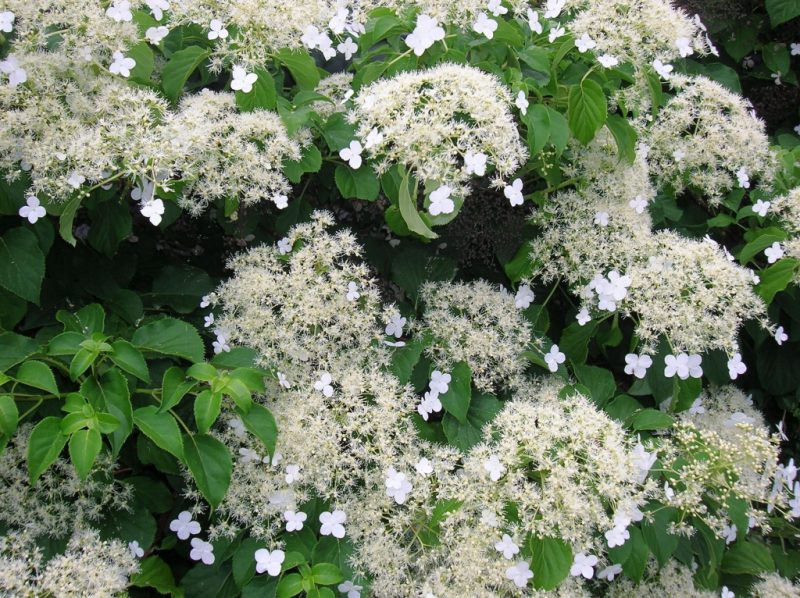
A traumatic way for creepers, but the fastest. In spring, the processes along with the roots can be separated from the plant. It is necessary to shorten the branches to 3 buds, cut the roots and rinse in manganese. Then the seedlings are planted.
Protection against diseases and pests
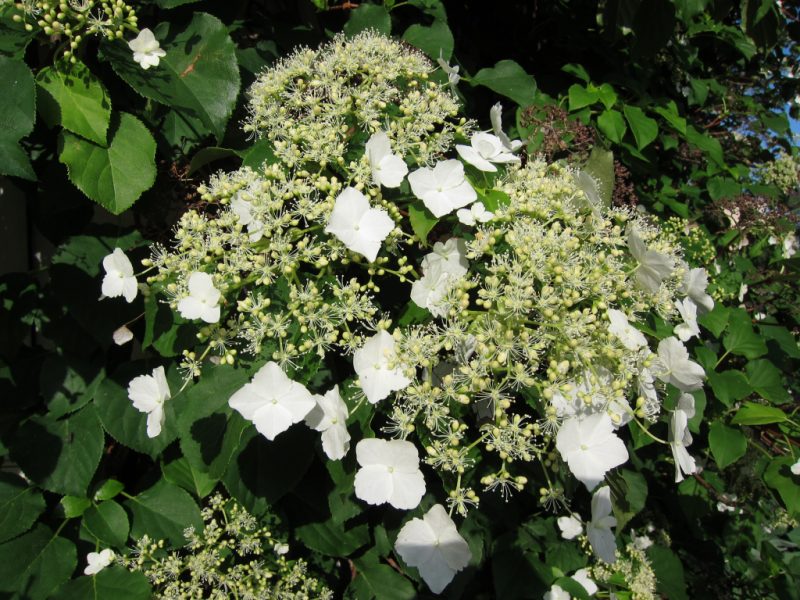
If curly vine grows in a suitable place and is properly looked after, then it will practically not hurt. But still, some problems may arise.
- If the soil is too well-known, then spots may appear - chlorosis. In this case, the vine should be poured with nitrate and ferrous sulfate, diluting substances at the rate of 4 g by 3. It is added every three days.
- Due to excessively high humidity, hydrangea can become infected with powdery mildew. A sign of the disease is oily spots.To cure hydrangea, it is sprayed with a solution of copper and soap, for which 15 g of copper sulfate and 150 g of green soap are mixed and diluted in a bucket of water.
- Due to the high humidity, gray rot may develop around the vine. The affected parts of the liana will need to be removed, and the plant sprayed with fungicides.
- If the humidity is lowered, aphids and spider mites can attack hydrangea. To get rid of insects, hydrangeas are sprayed with insecticides.
To prevent the appearance of pests and diseases, the area on which the vines grows should be kept clean - remove fallen leaves and weed out. Weeds and dried leaves are an excellent breeding ground for bacteria and insects.












